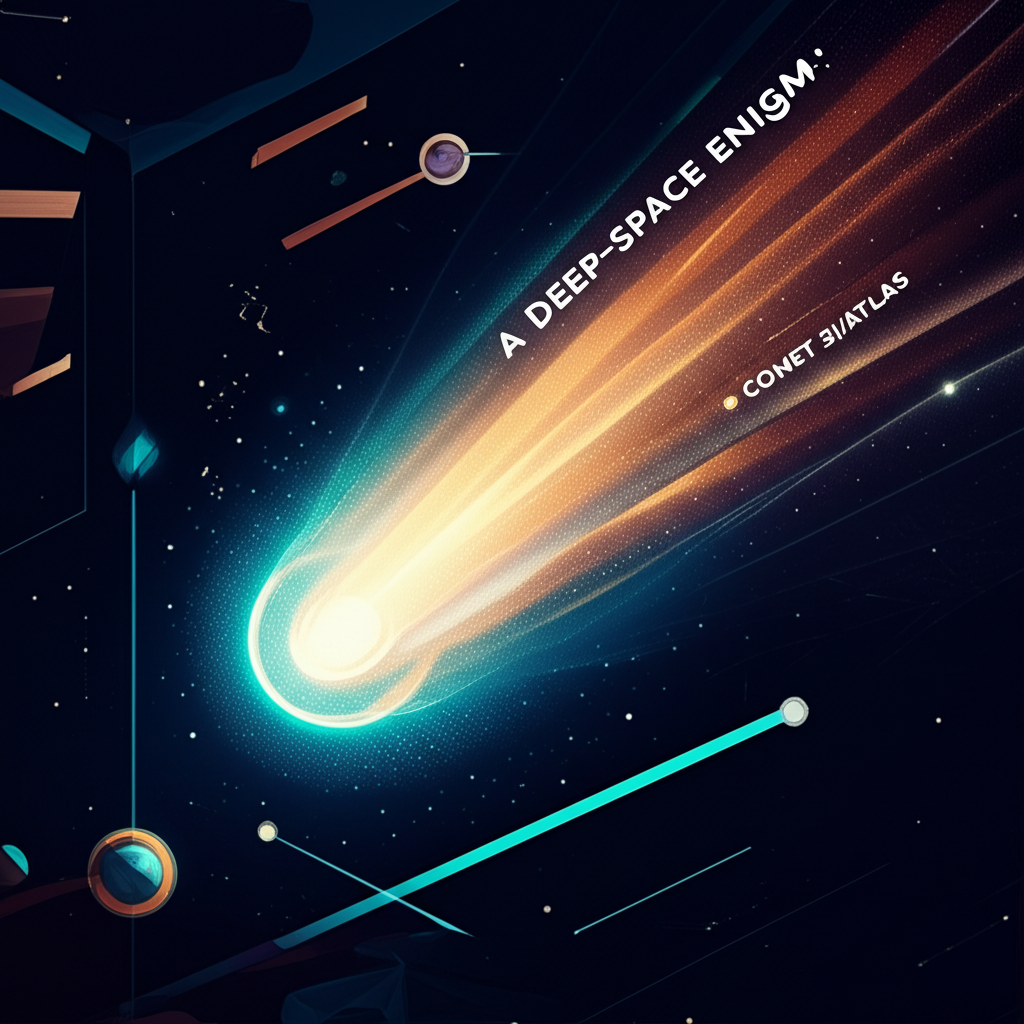A Deep-Space Enigma: Unpacking the Intrigue of Comet 3I/ATLAS
Catching a glimpse of a potential interstellar visitor and its cosmic dance.

The Dazzling Arrival of Comet 3I/ATLAS
The cosmos continues to surprise us, and a recent image from Qicheng Zhang at Lowell Observatory has once again turned our gaze towards the deep reaches of space. Captured in stark detail, the image features Comet 3I/ATLAS as a luminous white dot, stealing the show amidst the distant stars. What makes this particular observation intriguing isn't just the comet's brightness, but also the subtle distortion seen in a nearby star, a tell-tale sign of the comet's rapid motion across the celestial canvas.
The '3I' designation hints at a potentially interstellar origin, meaning this isn't just another icy wanderer from our solar system's Oort Cloud, but rather a visitor from beyond our Sun's gravitational influence. Such objects, like the famous 1I/'Oumuamua and 2I/Borisov, offer invaluable clues about the composition and processes in other star systems.
What Makes an Interstellar Comet So Special?
Most comets we observe originate from the Kuiper Belt or the Oort Cloud, vast reservoirs of icy bodies at the outer edges of our solar system. They orbit our Sun, making regular (or very long) trips around it. An interstellar comet, however, has been ejected from another star system and is merely passing through ours. These rare visitors are like cosmic messengers, carrying material from stellar nurseries far, far away.
The study of these objects can provide direct insights into the chemical makeup of protoplanetary disks around other stars, offering a unique opportunity to understand exoplanetary formation without ever leaving our home system. They are literally pieces of other solar systems, right here for us to observe.

The 'ATLAS' Legacy: A Name Synonymous with Discovery
The name 'ATLAS' refers to the Asteroid Terrestrial-impact Last Alert System, a robotic astronomical survey system that scans the night sky for objects that might pose a threat to Earth. Beyond its primary mission, ATLAS has become an incredible discoverer of comets, asteroids, and even unusual phenomena like this potentially interstellar object. Its wide-field telescopes, constantly sweeping the sky, are our eyes to the unexpected visitors from cosmic distances.
The distortion of the star in the image due to the comet's motion isn't a defect; it's a testament to the long exposure times needed to capture faint objects and the comet's significant relative speed. It's a reminder of the dynamic dance happening light-years away and the intricate processes astronomers employ to capture these fleeting moments.

The Future Trajectory: What Awaits Comet 3I/ATLAS?
Like many comets, the future of Comet 3I/ATLAS is uncertain. Comets are notoriously unpredictable; they can brighten unexpectedly, or just as suddenly, they can disintegrate into dust, a phenomenon observed with several comets in the past, including other ATLAS discoveries. If this comet indeed hails from another star system, its trajectory will likely take it out of our solar system, continuing its solitary journey through the vast emptiness between stars.
For now, astronomers will continue to monitor its progress, hoping to gather as much data as possible before it potentially fades or departs. Every piece of information helps us refine our models of planetary formation and the distribution of matter in the galaxy, making each such celestial object a precious scientific beacon.





